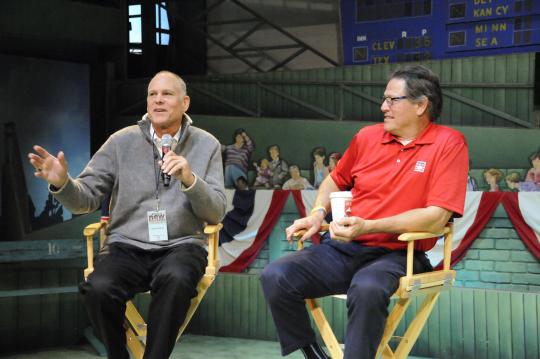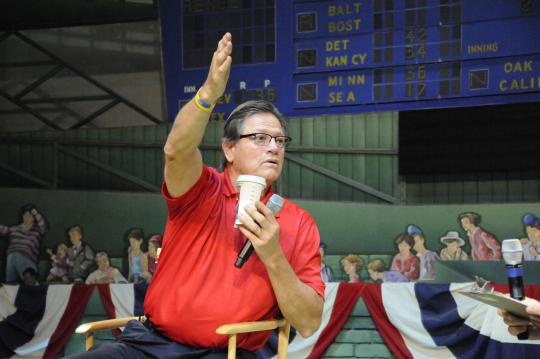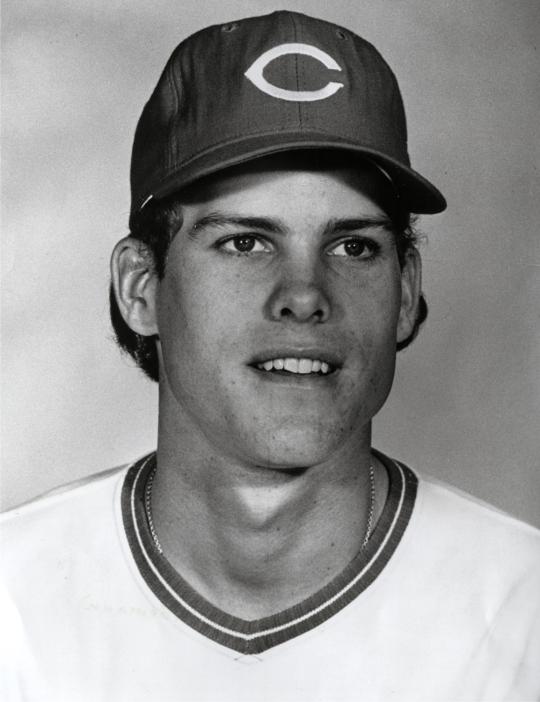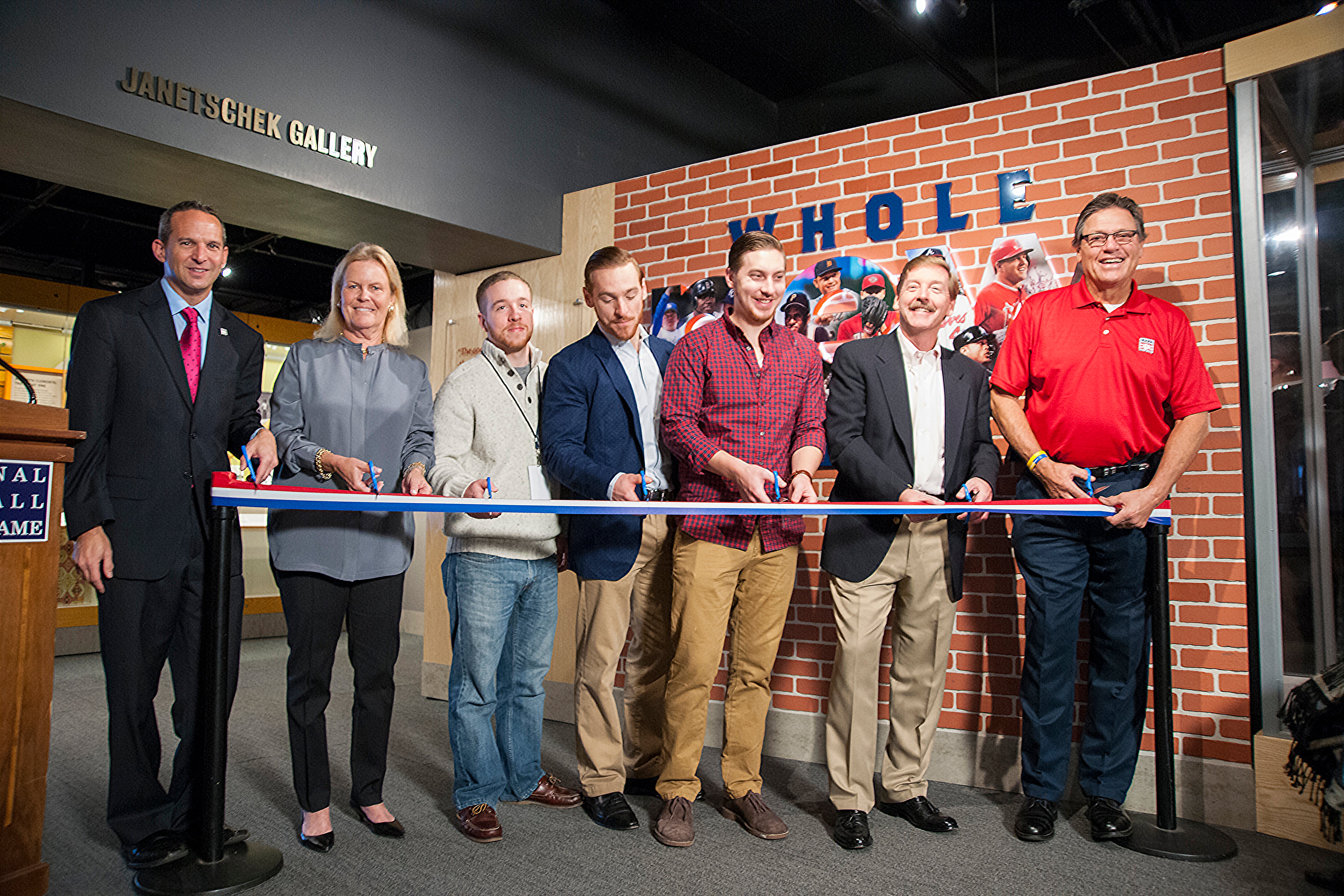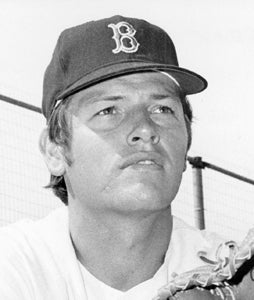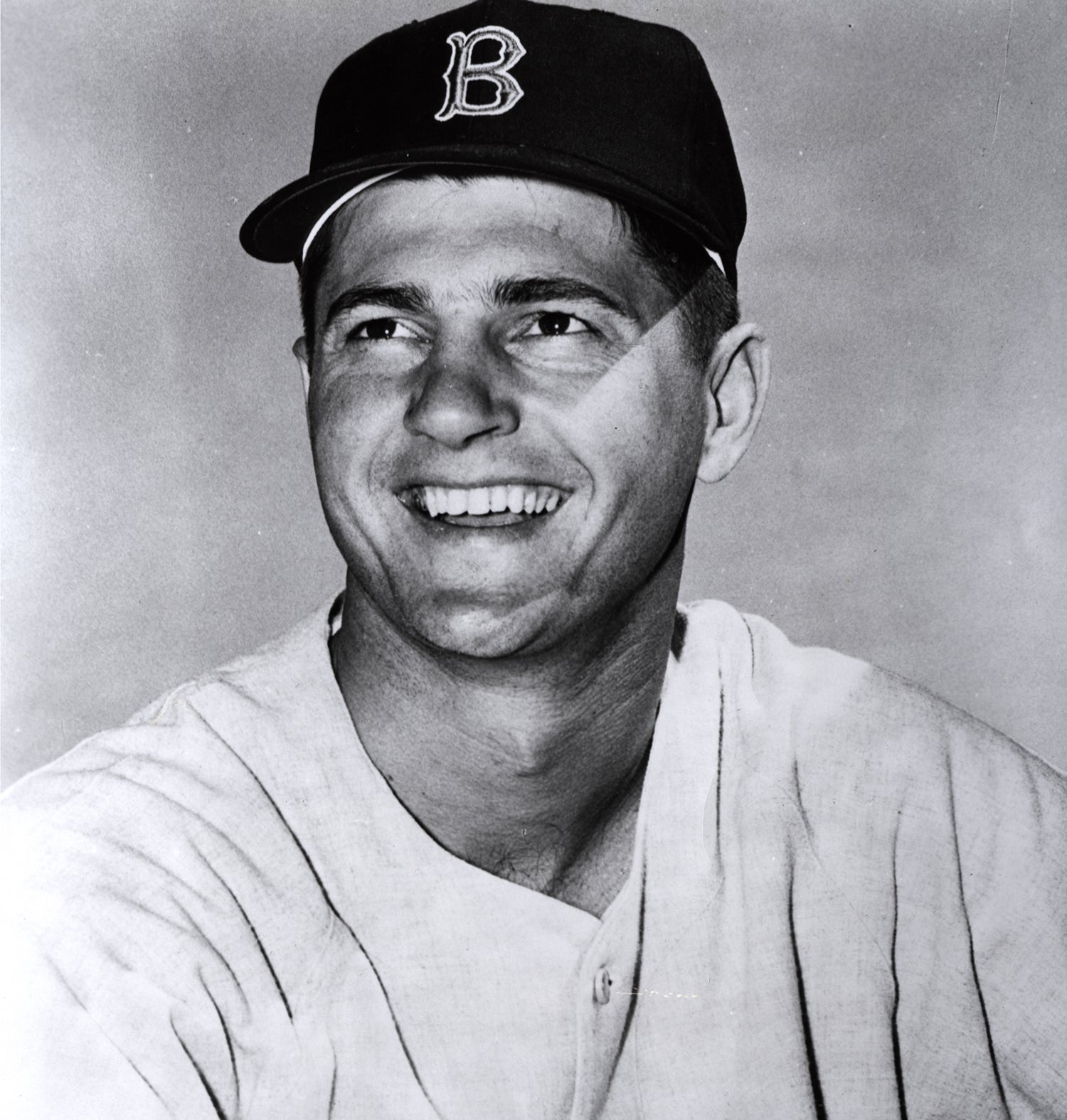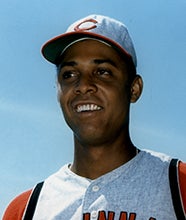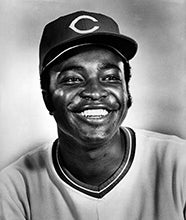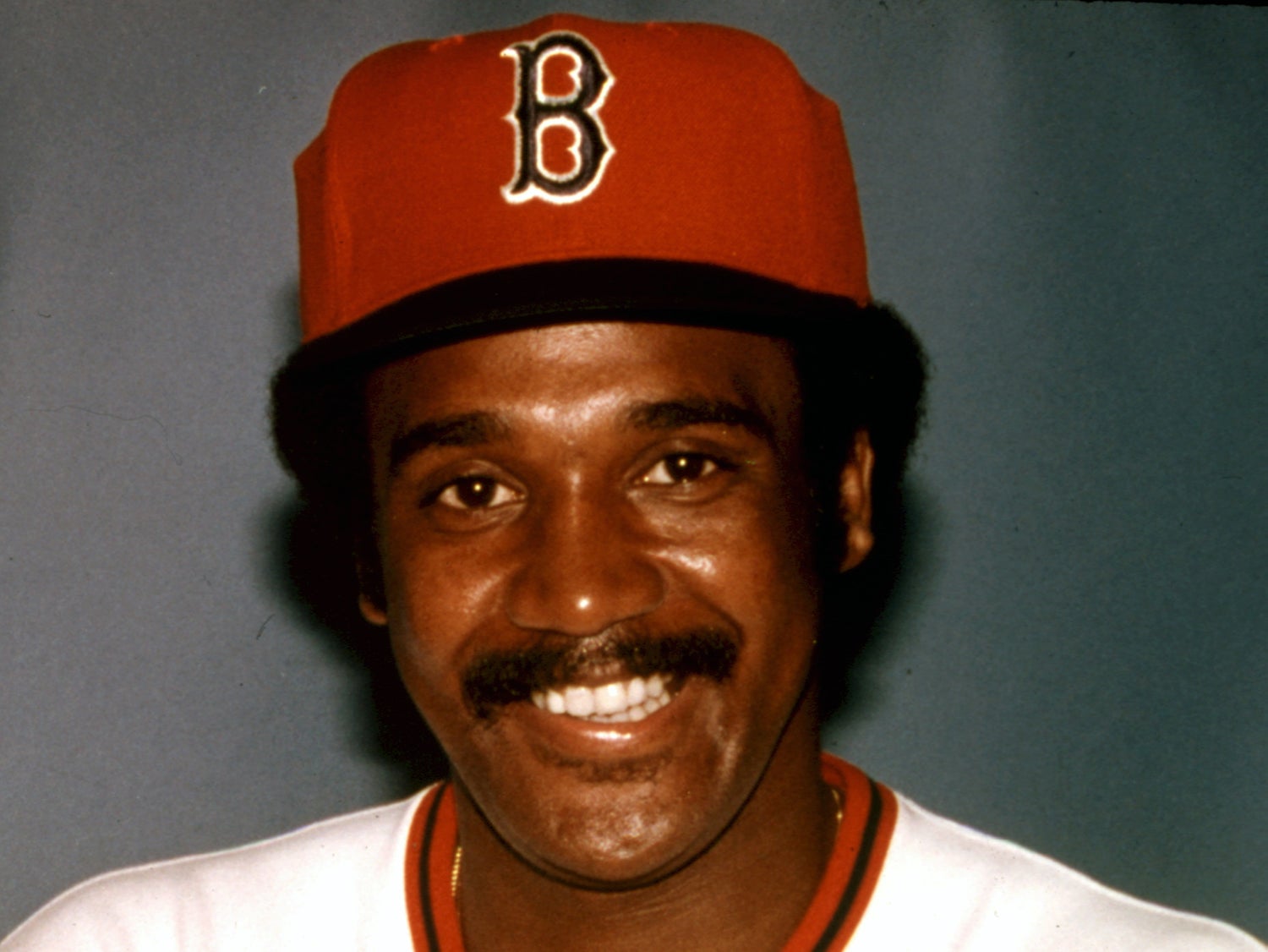- Home
- Our Stories
- Fisk, Eastwick recall magical Game 6 in 1975 World Series
Fisk, Eastwick recall magical Game 6 in 1975 World Series
It is still the moment that many fans and historians remember as the one that brought baseball into the modern era.
Carlton Fisk waved his 12th-inning home run fair in Game 6 of the 1975 World Series, and the next night more than 75 million fans watched as the Reds defeated the Red Sox in Game 7.
On Oct. 21, 2015, the National Baseball Hall of Fame and Museum forged a reunion of sorts from the 1975 World Series by hosting a “Voices of the Game” program featuring Fisk, a member of the Hall of Fame’s Class of 2000, along with a special appearance by former Cincinnati Reds reliever Rawly Eastwick.
Displaying a vivid and surprising sense of humor, the 67-year-old Fisk captivated a sellout crowd in the Grandstand Theater as he offered his recollections of the World Series that made him a household name. Fisk was one of six Hall of Famers who either played in or managed that Series, along with Carl Yastrzemski, Johnny Bench, Tony Perez, Joe Morgan, and Sparky Anderson. (Jim Rice, who was injured, did not appear in the Series.)
Former relief pitcher Rawly Eastwick (left) and Hall of Fame catcher Carlton Fisk discussed the 1975 World Series, the opening of Whole New Ballgame and more in a Voices of the Game event with Museum visitors immediately following the ribbon cutting in the Grandstand Theater. (Milo Stewart, Jr. / National Baseball Hall of Fame)
Share this image:
As much as anyone, it is Fisk who is forever associated with the Series, specifically for his at-bat in the 12th inning of Game 6, when he hit one of the most dramatic home runs ever seen on live television. That historic home run sealed a 7-6 win for the Boston Red Sox and forced a Game 7 showdown. Fisk’s blast is prominently featured in several places in Whole New Ballgame, including a full-screen video of the home run, a smaller video clip that runs on a continuous loop in the exhibit, and the actual bat that Fisk used to hit the home run.
As Fisk stepped to the plate to face Reds reliever Pat Darcy after midnight on October 22, he admitted that he didn’t have much of a scouting report on one of the Reds’ least known pitchers.
“Does anyone here know much about Darcy?” Fisk asked rhetorically of the crowd in the Grandstand Theater, drawing a reaction of loud laughter. “All I knew was that he was a right-hander who was trying to keep the ball low in the strike zone.” After watching a first-pitch fastball sail high and outside of the strike zone, Fisk found the low, sinking fastball that he was looking for on the second pitch. Seconds later, after doing his best to keep the ball fair with the force of his mind and body, Fisk watched the ball strike the left field foul pole at Fenway Park.
When Fisk had stepped to the plate to start the inning, he was especially tired, having caught all 12 innings of a high-wire, tension-filled game that the Red Sox needed to win to avoid the end of their season.
“When the game started, it was October 21st, and it ended on October 22nd,” Fisk recalled of the epic game that stretched past the midnight hour. That’s why Fisk decided to switch bats, foregoing his regular bat for a lighter model used by one of his Red Sox teammates. “The bat that I hit the home run with was Rick Burleson’s bat,” said Fisk, referring to the Red Sox’ 165-pound shortstop who was nicknamed “Rooster.” “We used the same model bat, but I used the longer bat and the heavier bat. I had picked up my bat, and it just felt heavy. So I went over to Burleson and said, ‘Rooster, let me use your bat.’ ”
Not surprisingly, Fisk never returned the bat to Burleson, keeping it for the last 40 years and fetching it from the corner of his closet when the Hall of Fame approached him about it. Did Burleson ever ask him for the bat back? “Nope,” Fisk said matter of factly but with a smile, “and he wouldn’t have gotten it back even if he did.”
Fisk would not have had a chance to assume the role of Game 6 hero without the efforts of another teammate, Bernie Carbo. The quirky backup outfielder – “he was more than offbeat, he was just off,” said Fisk of his former teammate – came off the bench in the eighth inning to hit a three-run homer against Eastwick, the Reds’ hard-throwing relief ace.
“Just the pitch before,” Fisk recalled, “Carbo had one of the worst swings that a major league ballplayer could have ever had; he just barely fouled the ball off to stay alive, or he would have been out. He should have been out. And then the next swing, it’s the best swing you could ever see in a game.” Driving the ball to straightaway center field, Carbo easily cleared the Fenway Park wall, the ball traveling anywhere from 420 to 450 feet.
It was a low point for Eastwick, but hardly typical of his performance, either in the Series or throughout the regular season, when he led the National League in saves. Other than the Carbo home run, Eastwick pitched well against the Red Sox, spinning a 2.25 ERA and picking up two wins and a save in relief of the Reds’ starting staff. In fact, prior to the Carbo home run, speculation ran rampant that Eastwick would be named the Series MVP.
Rather than dwell on potentially lost hardware, Eastwick has preferred to place the focus of the Series on the quality of the two teams involved. “I just remember what a great bunch of players on both sides and what an exciting series,” said the 65-year-old Eastwick, who visited Cooperstown with his wife, Hanky. “I think baseball was in a little bit of the doldrums at the time and it brought back a lot of interest in the game.”
Eastwick’s Reds took the Series in seven dramatic games, but that outcome could have been different if not for a major injury. “Who knows what would have happened if Jim Rice had played in the Series,” said Eastwick, “because he had a broken wrist and couldn’t play. So who knows what could have happened?”
During the regular season, Rice had hit .309 with 109 RBIs to finish third in the American League MVP race.
For Eastwick, the subject of the ‘75 World Series comes up often in conversation, largely because of geography. “It gets brought up a lot because we live up in the Boston area,” Eastwick said. “I get asked a lot about the ’75 Series. It was one of the most exciting ones ever.”
Bruce Markusen is the manager of digital and outreach learning at the National Baseball Hall of Fame and Museum

